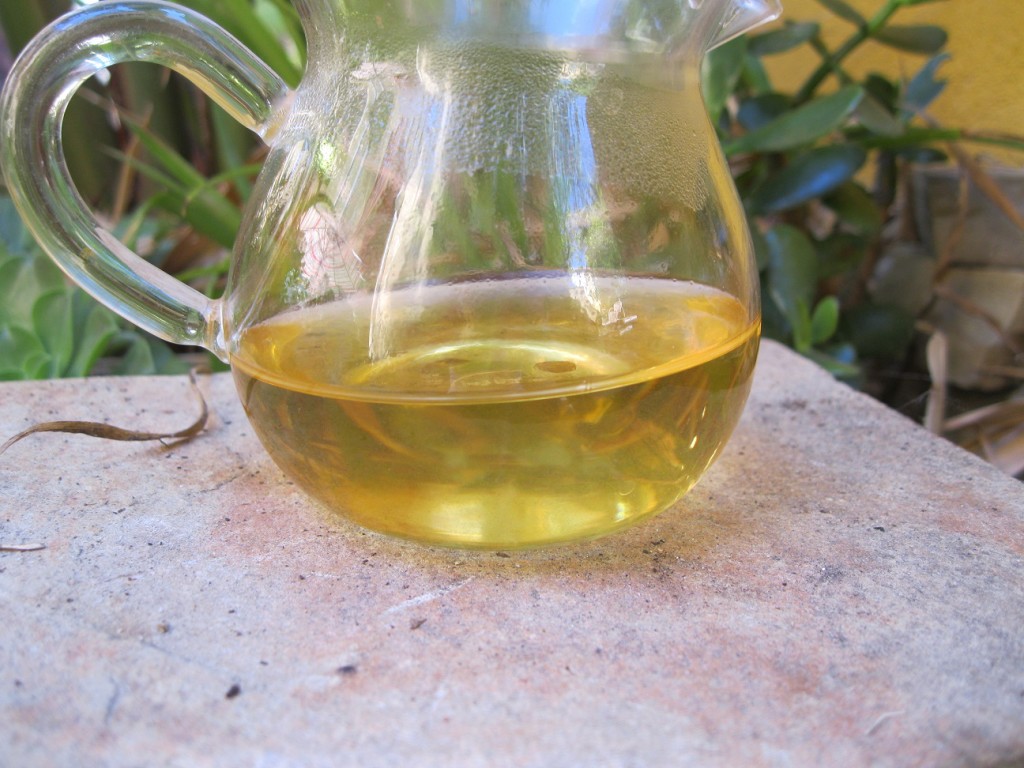Top 10 Pu erhs 2015-’05

The question of what the top pu erhs are sometimes arises. In the next few articles, we’ll approach this question from the vantage point of terrior. This makes sense, as pu erhs are priced by terrior, brand, and year… the older, the pricier all things being equal. The standing of a particular terrior doesn’t change much from year to year. Only after time can a particular vintage be judged outstanding. Therefore, gaining a sense of the most popular terriors gives a proper lay of the land within the pu erh universe. Below is a description of the ideals of each terrior, standards by which to judge the quality of your own treasures.
Lao Banzhang
From times past, the people of Lao Banzhang have been using traditional methods to cultivate ancient pu erh tea trees. This primarily consists of natural sun-drying without fertilizers or pesticides. The methods are what we’d call organic in modern times, measures that are purely natural, sans polluting elements, along with cultivation in the natural environment amidst other living creatures. Lao Banzhang pu erh tea has a vigorous cha-qi that is full of depth and fragrance. With traits second to none, over time Lao Banzhang has come to be called “the king,” “the tea king” and “King Banzhang.”
In terms of its standing within the universe of pu erh tea, Lao Banzhang can be likened to the oolong of Fujian Province, Da Hong Pao. The particularity of Lao Banzhang’s cha-qi is from its pure lineage. Its characteristics are bitterness and astringency, with a lasting huigan (aftertaste). The broth is cheery and bright, with freshly brewed leaves being tender, carrying a hint of honey fragrance. It transforms phlegm, soothes the throat, and generates saliva.
Traits: Vigorous qi, a bitter flavor that in the mouth that transforms into a long-lasting sweetness. The bitterness is every bit as strong as its fragrance, but it transforms in an instant to stimulate the production of saliva in the cheeks.
Lao Banzhang is part of the Bulang region. The bulk of Bulangs contain Hekai and Banpen material. Many offerings that claim to be Lao Banzhang contain material from neighboring villages and are mixed with other Bulang terriors. The pu erh Junky presently offers one reasonably priced Banzhang which is most certainly mixed but which is also certified organic. This is the 2008 Baby Bok Choi, by Mountain Top Tea Co. The material contains a few stems, along with a silver bud or huang pian here or there. The liquor is a bright clear yellow and the aroma is sweet like honey. Unlike the hallmark of Lao Banzhang, this offering isn’t very bitter, more pleasantly grassy-sweet with hints of black pepper, very similar to its namesake bok choi. There’s also a smidge of vanilla. The huigan is moderate as is the astringency. It’s a fine everyday drinker for those who fancy a moderately complex pu erh with a modest price. It’s a fine replacement for water, quenching thirst, clearing heat, and strongly promoting urination.
There are also a few ripes with the Banzhang name that your humble pu erh Junky offers, but ripes are generally judged by different standards. Thus, we’ll save that discussion for another time.
Naka
Naka is the most representative ancient pu erh tree material from the Meng Song region. Officially, it is administered by the residents of the Menghai County, Meng Song Township, Greater Man Lu Village Committee of the La Gu Nationality. Located to the east of Hua Zhu Liangzi Mountain, the quality of the tea from the Naka village is generally well-accepted. The age of the trees is between 300-500 years old.
Within a larger context, Naka tea falls within the class of the Meng Song region. Among the ancient arbor of the Meng Song region, Naka is the most famous. Naka pu erh doesn’t possess the bitterness of Bulang nor does it possess the astringency of Pasha. It is more fragrant than Bing Dao but possesses a similar mouth-feel. However, it is not as fine and tender as Bing Dao. Naka endures several infusions. The huigan clearly stimulates saliva production. Bamboo Naka is also quite famous. This is a product of the La Gu tribe, something for which it became renowned in the Qing Dyansty (1644-1911) when it was offered in tribute.
Traits: Relatively strong wild-mountain qi. Infused leaves have a pleasant aroma. It possesses a bitterness and astringency, with bitterness being most pronounced. The broth also has some sweetness and the huigan is quick and pleasant. It gives a decent number of infusions and the fragrance is pure.
pu erh Junky has one Naka treasure in its possession, the 2012 Classic Raw from Langhe Tea Factory. Though intuitively the pu erh Junky can tell that this offering doesn’t reach the heights to which the stratospheric Naka can reach, the 2012 Langhe Classic Raw is raw is on the mark. This material straddles the line between the fruitiness of Bing Dao and the bitterness of Bulang, with a huigan on the light floral side. It’s a compact cake, dry-stored, having undergone relatively little transformation. Overall the experience closely approximates the description above.
